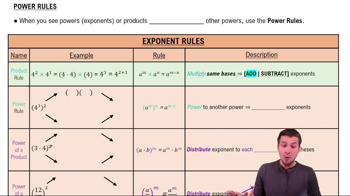Exponential growth rates
a. For what values of b > 0 does bˣ grow faster than eˣ as x→∞?
 Verified step by step guidance
Verified step by step guidance Verified video answer for a similar problem:
Verified video answer for a similar problem:



 5:53m
5:53mMaster Finding Differentials with a bite sized video explanation from Patrick
Start learning